In most of the aspects of my life, I have become competent. Competent is an interesting word, from Latin, of course, as are most interesting words. Competere is the infinitive verb, meaning to compete, to vie, to be owed. No small coincidence that the word competition comes from competitio, a meeting of rivals. But enough etymology.
I look at competence as a internal competition, to always try to excel at something. The problem I have found is that good is the enemy of great. I don’t need to be great at things to enjoy them, but to settle for mediocre is not in my nature. I want to improve myself.
Add to that the Impostor Phenomenon (the idea that maybe you’re just lucky and you’re not all that) and you find a complex psychological stew between my ears. I am told on a regular basis that my business is a model for the industry, that we’ve achieved something amazing that no one else has done. etc. I am called out as a leader in the paddling community. It makes me uncomfortable, since I really don’t know if I am or not. It’s not false modesty; I have no frame of reference.
On the other hand is the Dunning-Kruger Effect. In short, thinking you’re a genius when you’re really just a dolt. A few presidential candidates, anti-vaxxers, and talk show hosts come to mind. To quote Shakespeare,* “The fool doth think he is wise, but the wise man knows himself to be a fool.”
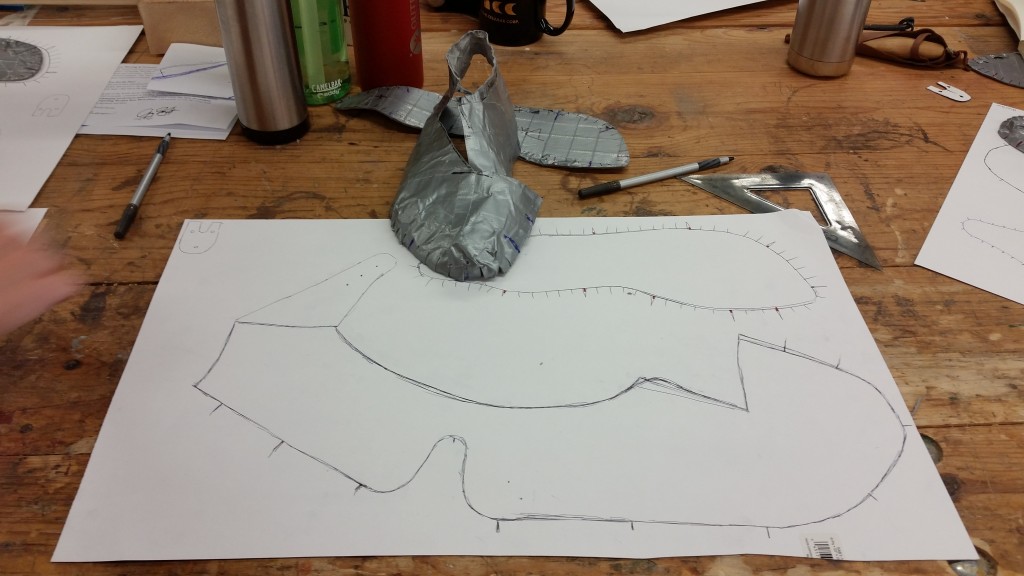
Foot casting and pattern.
Background laid out, I want to tell you about how much I sucked last week. A trip to the North House Folk School was in order. I needed to do something with my hands after a lot of brain work, and North House is the cure for that. Take a class there. Any class.
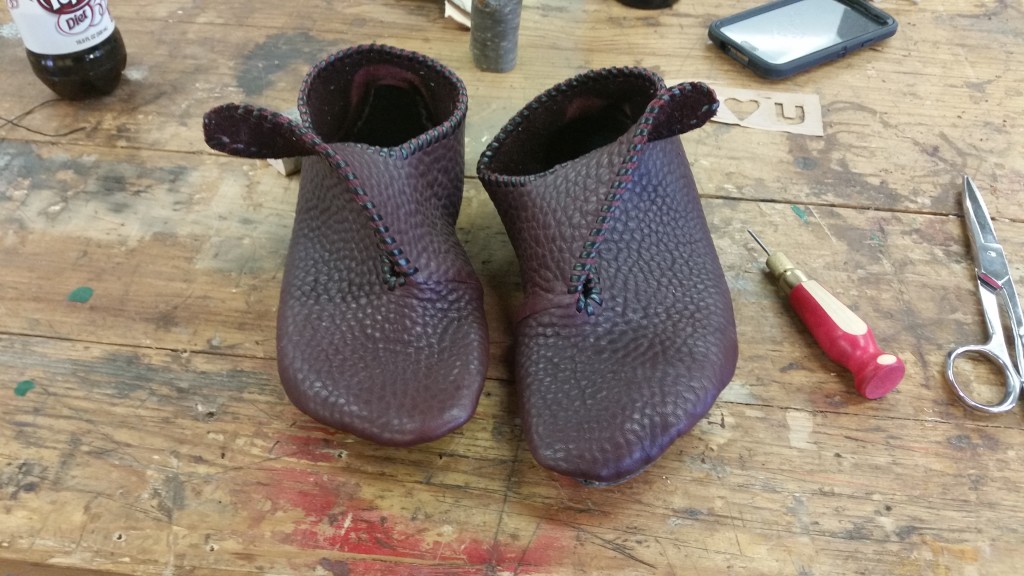
Almost done.
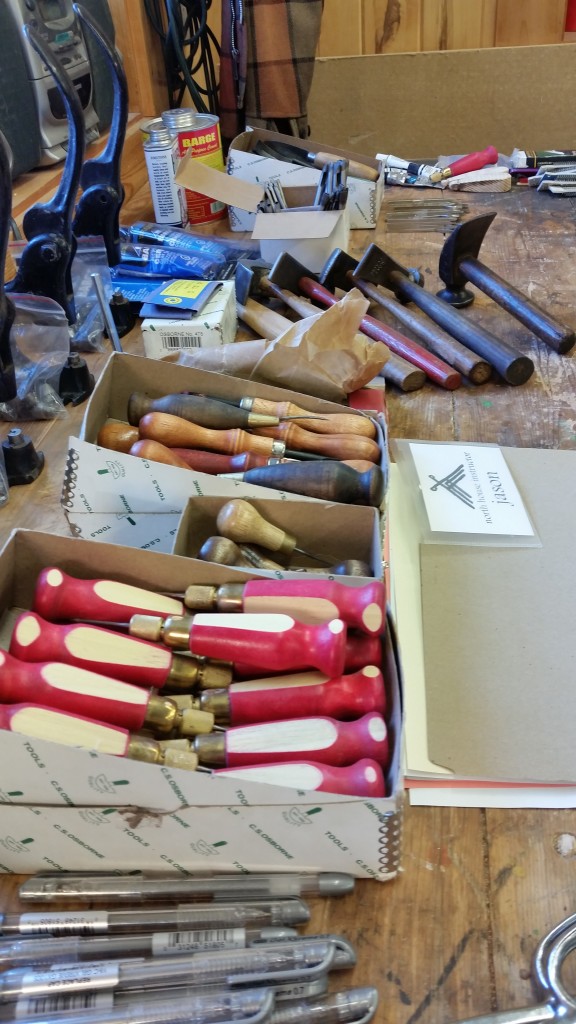
Tools. Tools! TOOLS!
My choice was the Scandinavian Turn Shoe class taught by Jason from Laughing Crowe. He’s a gifted shoemaker and an excellent teacher. Even with his expert tutelage, nothing about this came easy to me. It was frustrating, it was aggravating, it was irritating. I sucked at this. I figured out why on the third day.
Metal behaves predictably for the most part. Heat up the steel to a certain temperature, hit it with the same force, and it will do the same thing most of the time. Same with wood (at least clear-grain wood), where it behaves mostly properly and predictably. With leather, it can vary in texture on the same hide; heck, in the same square foot of the hide. That’s because cattle are not consistently one thickness. Go figure, neither are we. If you don’t believe me, pinch the skin on the back of your hand, then on your shoulder. Big difference.
I was doing my best, but the truth is that I was incompetent. I was really and truly stymied by the changes in texture and techniques and the inability to really be precise with the leather.
And, it was the best class I have ever taken. I experienced a lot of joy once I got over myself and embraced incompetence. I got to feel like my students feel sometimes. When you are highly competent at something you forget that some people are just as incompetent at what you’re teaching as you are at something else.
Without comparing myself to Wolfgang in any way talent-wise, Mozart was a genius composer, but an atrocious teacher. He had a disdain for many of his students, criticizing them in private letters to his parents. He just could not see why they couldn’t hear what he hears in his head. I can’t imagine taking lessons from someone who just couldn’t see why this isn’t innate.
Maybe Mozart would have benefited from making a pair of shoes.
Respectfully submitted,
Canoelover
P.S. In the end, I have a wearable pair of shoes. They have flaws but they’re super comfortable and the flaws are only something I would notice. The next pair I make will be much better. And, I can make shoes, which is a pretty rare thing. When the zombie apocalypse comes, I will be shod. That black stuff on the bottom is barge cement mixed with dust from reground tires. Should be awesome.
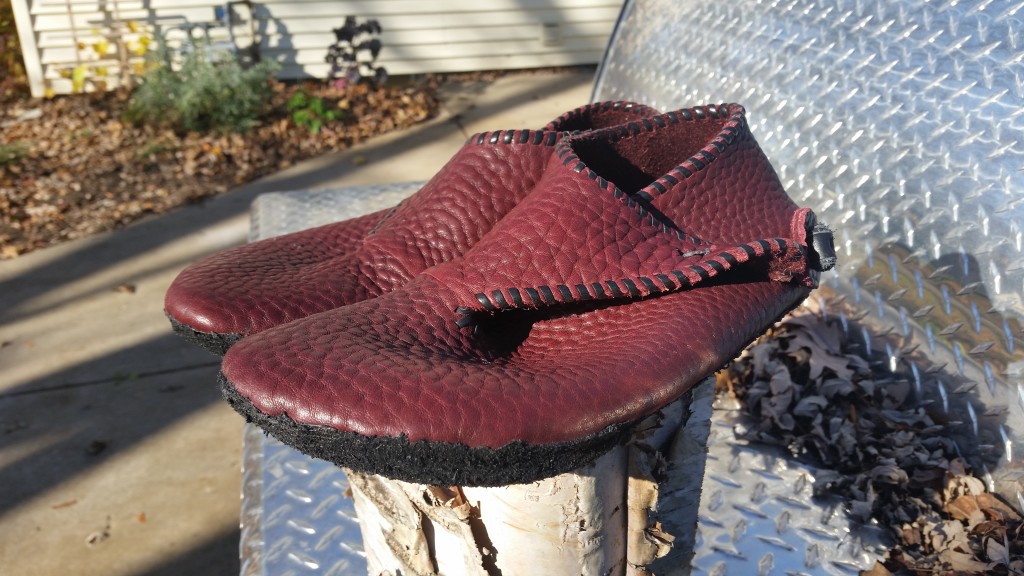
*Full disclosure: I had to look up that quote. I am not a Shakespeare scholar.

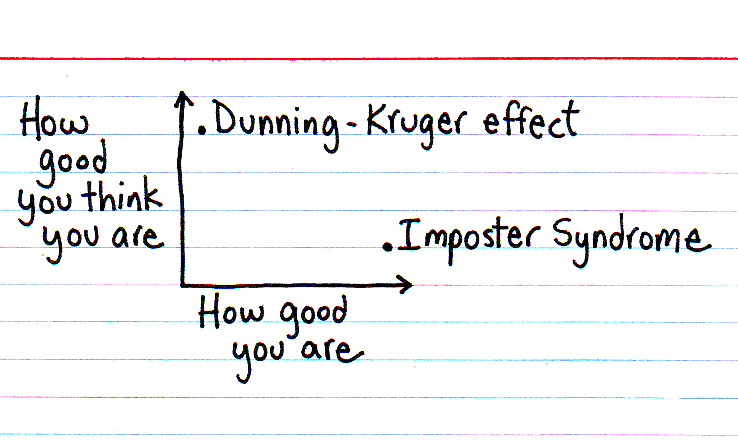
You are far from incompetent. If anyone is incompetent, it would be me writing this now. But here is goes…
You stepped out of your comfort zone and learned many things beyond the actual project. No fabric is perfect- metal, leather or otherwise. It is the natural to find imperfections. My skin has many marks and scars reminding where I have been; my hair is not the color it once was. Imperfections that I can cover if I choose- be it with clothing, make up or hair dye. But, as you may know, I have chosen to keep my permanent silver summer highlights out there for everyone to see and I am not that fond of make-up, either.
Perhaps the true challenge is not what you wanted the leather to be but knowing what it actually was. The imperfections of the fabric were there before you picked it up. The expectations that the material would behave as others you have worked with in the past created an opportunity not only to learn a craft never done before, but it also gave you insight to so much more. This would be like me expecting a cut of slinky knit fabric to behave just like a cut of cotton canvas. The basics of the fabric are similar but each one requires a different approach to bring it together (and I would seriously doubt that I would use cotton canvas to sew a dress for a wedding). But, I had to learn how to manage that slippery knit fabric is I wanted the dress to be completed. Many of us are often challenged by imperfections. How we choose to be bothered by them is ultimately up to each of us.
Yesterday I was on a binge of embroidery with my sewing machine. I flew through one project and I started another one right away. The fabric was the same but the design was different and the way it went into the hoop was completely different. When I started the second project, I knew I needed to pay attention so that the excess fabric would not get caught up in the hoop. Needless to say, while I as pulling thread for the rest of the project, the excess fabric did get caught and I was unable to save the project. Disappointed? Yes. But I will continue to play with different fabrics and take the risk again.
Chogyam Trungpa said, “You must personally accept the responsibility of improving your own life.” Once again, you did that, my friend. Simply by stepping out of the comfort zone. By the way- those are beautiful shoes.
What is the ratio of barge cement to tire bits? How are the tires ground up? I can see the traction on my mukluks and mocs improving by leaps and bounds.
Thank you for a great blog
RB
Richard, the ratio isn’t exact, but you want to make a peanut butter like consistency. The tire dust can be obtained by asking nicely at a place that does retreads for truck tires. Just sift it well to get the bug chunks out. Good luck!!